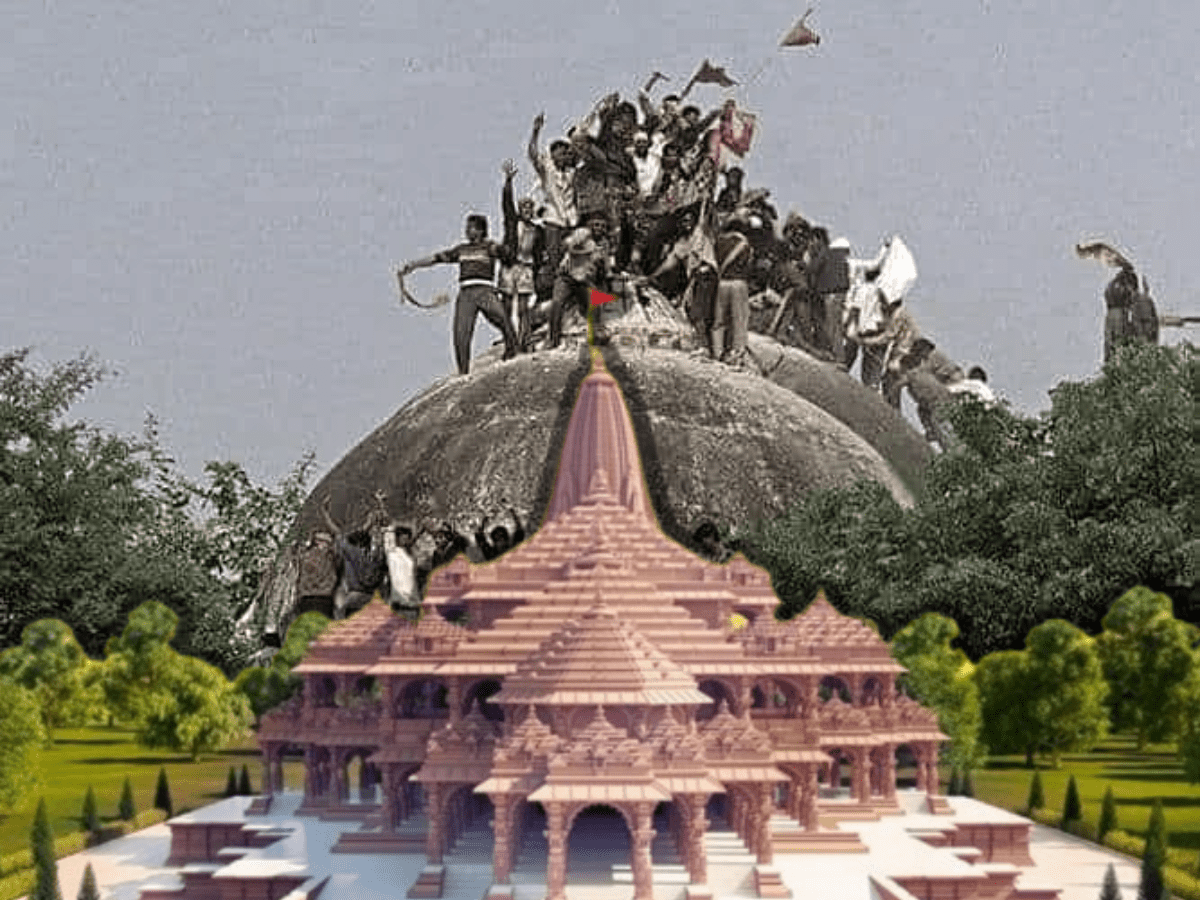
Thirty years after its demolition, the Babri Masjid destruction and the massacre that followed remain fresh in the heart and soul of the Indian Muslim community. The crack that occurred between the Hindus and Muslims after the blood-soaked partition of 1947 further widened with the annihilation of the historic mosque.
Timeline of Babri Masjid demolition
The Babri Masjid was built in the 16th century in 1528 in Ayodhya by Mir Baqi, under the Mughal emperorship Babur. Ayodhya, the birthplace of Lord Rama, is considered one of the holiest places for Hindus worldwide.
In 1947, when India was established as an independent nation, a local court ruled that the Sunni Waqf Board had more control over the Babri Masjid as compared to the Shia Waqf Board.
From 1950 to 61, many suits were filed by both Hindu and Muslim parties to the court allowing them to pray inside the disputed land.

(Photo: Twitter/Sumayya Shaikh)
As years passed by, the argument between the Hindus and Muslims about the ownership of the land remained. In 1984, the Ram Janmabhoomi movement gathered momentum under the leadership of Bharatiya Janata Party (BJP) leader LK Advani and the right-wing organisation Vishwa Hindu Parishad (VHP).
In September 1990, Advani started the infamous rath yatra that began from Somnath to Ayodhya. He was eventually arrested in Samastipura, Bihar, by the Lalu Yadav government. VHP leader Ashok Singhal was also arrested.
December 6, 1992, saw modern-day history’s darkest hours as lakhs of Hindus kar sevaks reached the mosque and started destroying it. Within hours, the work was done. That evening, many Muslim households in Ayodhya were attacked leading to death and the destruction of property. The riots spread across the country where Mumbai reported 2,000 deaths.
On December 16, 1992, the Liberhan Commission was set up to investigate the event. The report was submitted 17 years later in 2009. It accused several BJP leaders like Atal Bihari Vajpayee, L K Advani, Murli Manohar Joshi, Kalyan Singh, Pramod Mahajan, Uma Bharti and Vijayaraje Scindia, and VHP leaders like Giriraj Kishore and Ashok Singhal and Shiv Sena chief Bal Thackeray and former RSS leader K. N. Govindacharya culpable in the demolition of the mosque.
In November 2019, the Supreme Court of India pronounced its “unanimous” verdict of the long-going dispute in the favour of the Hindu community stating that the disputed land, where the Babri Masjid once stood, would be given to them.
In August 2020, when the world was reeling under the COVID-19 virus, a bhoomi pujan of the Ram Mandir was conducted by Prime Minister Narendra Modi laying the foundation stone.
In September 2020, a special CBI court acquitted all 32 accused in the Babri Masjid demolition, including L K Advani, the epicenter of the riots.
U-turn of Indian newspapers
Two years ago, after the verdict was passed in favour of the Hindus, Siasat.com went through history headlines and observed an interesting change of political track by most mainstream newspapers.
Back in 1992, when the country had not taken a right-wing turn like today, words like “outrage” and “destroyed” were used to describe the sentiment and act of razing the Babri Masjid. Exactly 28 years later, the entire news was focused on Modi and his participation in the bricklaying ceremonies of the Ram Mandir.
Notable exceptions
The Telegraph was the only paper that visibly took a stand against the construction of the Ram Mandir. It stayed true to its usual style of scathing criticism through creative headlines.
While the main headline screamed ‘THE GOD THAT WE FAILED’, in highlighted words, it also reminded India of its most important book ― the Constitution. The text which reads ‘The book that begins with We, the people of India,’ was followed by a picture of the constitution itself. The West-Bengal headquartered newspaper even dug out Modi’s oath which he re-took as prime minister in 2019.

BabriZindaHai trends in Twitter all day
#BabriZindaHai, #BlackDay6December trended most of the day. Many posted pictures of the demolition day and before.



